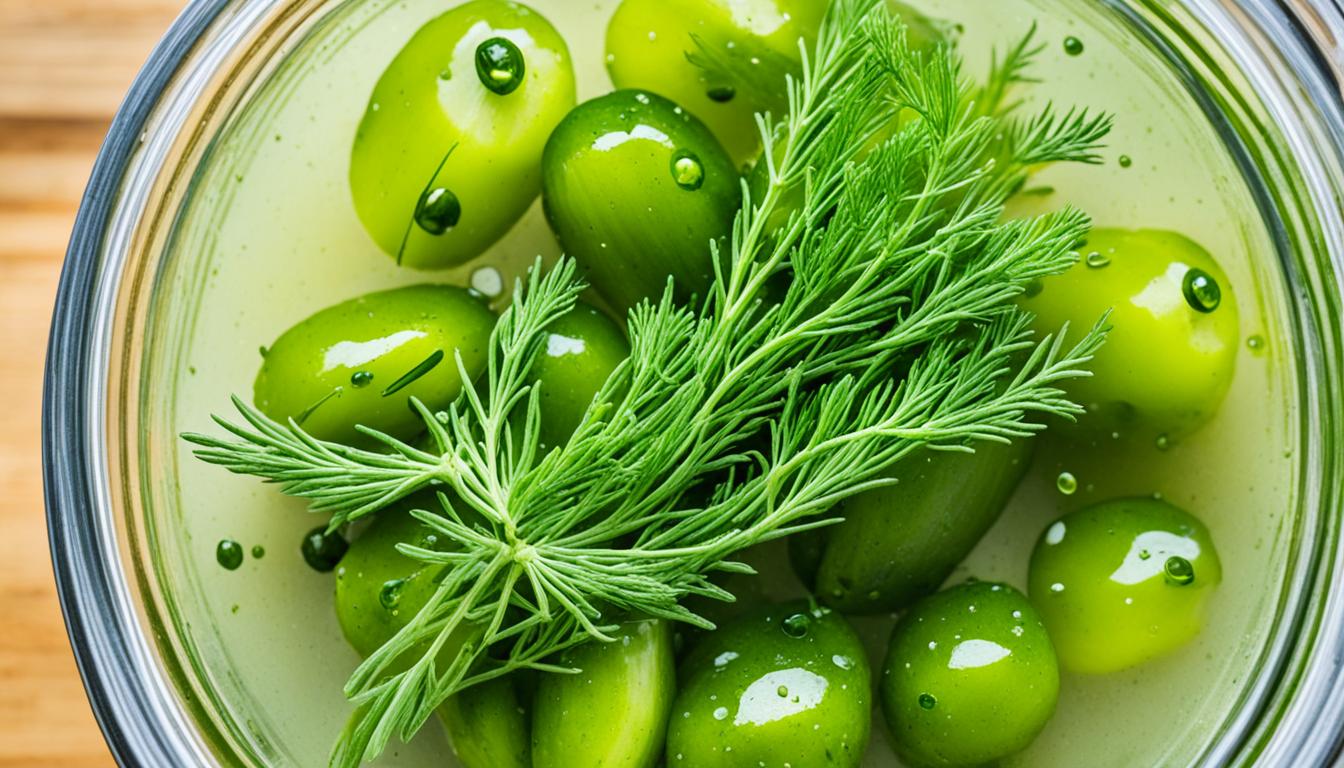Have you ever wondered how to make your own homemade lacto-fermented dill pickles? Well, look no further! We’ve got a simple recipe that will revolutionize the way you pickle.
Imagine biting into a tangy, mildly sour pickle that is not only delicious but also packed with probiotics. These homemade lacto-fermented pickles are incredibly easy to make with just a few ingredients and minimal effort.
But the best part? They can be enjoyed for up to six months when stored in the refrigerator, making them the perfect addition to your pantry. So why not give it a try and experience the satisfaction of creating your own probiotic-rich pickles?
The Benefits of Lacto-Fermented Pickles
Lacto-fermented pickles offer numerous health benefits. The fermentation process creates an environment that promotes the growth of beneficial bacteria, such as Lactobacillus, while inhibiting the growth of harmful bacteria. Salt, one of the key ingredients in the brine, prevents the growth of bad bacteria and helps with the conversion of sugars into lactic acid.
Lacto-fermented pickles are rich in probiotics, which are beneficial for gut health and digestion. These probiotics help to restore and maintain a healthy balance of bacteria in the gut, supporting overall digestive function. Consuming fermented vegetables, like traditional lacto-fermented pickles, can also enhance nutrient absorption and improve the body’s immune response.
Another noteworthy benefit of lacto-fermented pickles is their tangy and mildly sour flavor. This distinct taste is a result of the fermentation process and adds a refreshing and unique element to dishes. Lacto-fermented pickles can be enjoyed as a standalone snack, added to sandwiches for an extra zing, or served as a flavorful side dish.
The fermentation process for dill pickles is relatively simple, making it accessible to anyone interested in creating their own probiotic-rich foods at home. By harnessing the power of natural fermentation, you can transform cucumbers into a delectable and nutritious treat. The longevity of these pickles, when stored in the refrigerator, allows for prolonged enjoyment, providing a convenient and healthy snack option.
Overall, incorporating lacto-fermented pickles into your diet offers a range of benefits. From supporting gut health and digestion to adding a delightful tang to your meals, these traditional lacto-fermented pickles are a versatile addition to any kitchen. Embrace the simplicity of the fermentation process and enjoy the health benefits and flavor-packed goodness of homemade fermented vegetables.
How to Make Lacto Fermented Dill Pickles
To make lacto-fermented dill pickles, follow these simple steps:
- Start by choosing pickling cucumbers, ideally small to medium-sized and crisp.
- Slice off the blossom end and soak the cucumbers in an ice bath to firm them up.
- Prepare a saltwater brine by dissolving salt in filtered water, and bring the brine to a simmer.
- In a separate jar, add sliced cucumbers and if desired, fresh dill, garlic, or spices like peppercorns or mustard seeds for additional flavor.
- Pour the cooled saltwater brine over the cucumbers, ensuring they are fully submerged.
- Use a fermentation weight to keep the cucumbers below the brine.
- Cover the jar with a fermentation lid or loosely place a regular lid.
- Allow the pickles to ferment in a dark place for 3-5 days or longer depending on personal taste preferences.
- Once the desired level of sourness is reached, transfer the pickles to the refrigerator.
- Store the pickles in the refrigerator for several months to enjoy them at their best.
That’s it! Now you know how to make delicious fermented pickles with dill and garlic. These probiotic-rich pickles are a healthy and flavorful addition to any meal.
Tips and Variations for Lacto Fermented Dill Pickles
When it comes to making homemade lacto fermented pickles, there are a few tips and variations that can take your pickle game to the next level. First and foremost, selecting the right cucumbers is essential. Opt for pickling cucumbers specifically bred for pickling, as they have a lower water content and retain their crunchiness throughout fermentation. This will result in a more satisfying bite in every pickle.
Next, let’s talk about the salt. To create the perfect brine for your pickles, it’s recommended to use high-quality salt, such as Himalayan or sea salt. The quality of the salt affects the overall flavor of your pickles, so don’t skimp on this ingredient. Experiment with different types of salt to find the one that best suits your taste buds.
To elevate the flavor profile of your lacto-fermented dill pickles, consider adding additional ingredients like fresh dill, garlic cloves, or spices such as peppercorns, mustard seeds, or red pepper flakes. These flavorings not only add complexity to the pickles but also allow you to customize them according to your preferences.
If you find yourself falling in love with the tangy, probiotic-rich pickles, you can reuse some of the brine from a previous batch to kickstart the fermentation process in subsequent batches. This saves time and ensures consistent results. Additionally, don’t be afraid to experiment with fermentation times to find the perfect balance of sourness and crunchiness for your pickles.
Remember, homemade lacto fermented pickles are incredibly versatile. Enjoy them as a healthy snack, add them to sandwiches, or incorporate them into your favorite recipes. The possibilities are endless, so get creative and savor the joy of making your own homemade lacto-fermented dill pickles.
